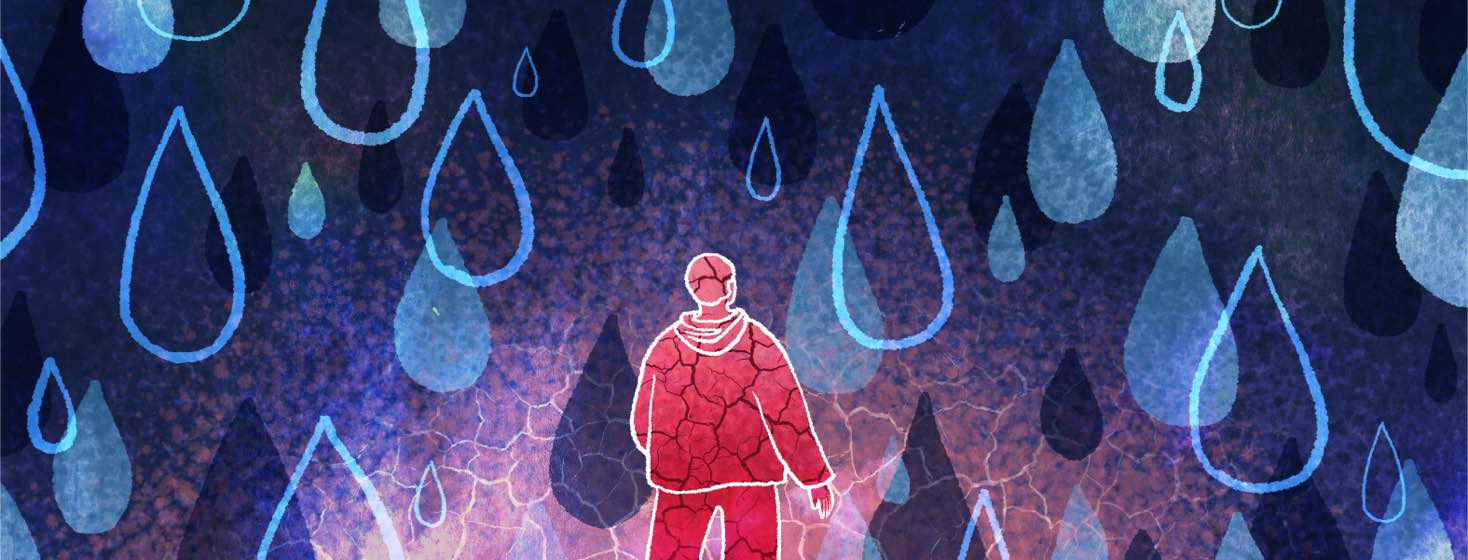Community Spotlight: Jonny
Jonny shares his story of getting diagnosed with chronic dry eye and trying to treat it, while also touching on the most challenging parts of living with the condition and what he wishes other people knew about it.
My diagnosis journey
My dry eye journey started around six years ago, after a relationship breakup. I went through a period of depression and anxiety and, as a result, was taking a beta-blocker medication called propranolol. It may be a coincidence, but while on this medication, my eyes became very sore, inflamed and watery. I later learned that watery eyes can be a symptom of dry eyes. Sounds crazy, right?
After a visit to my doctor, I was diagnosed with blepharitis (a condition that causes inflammation of the eyelids) and was prescribed some lubricating eye drops. The doctor also explained that I should use a warm compress on my eyes daily to try to unclog the meibomian glands in my eyelids. After months of trying different eye drops to no avail, the doctor referred me to an ophthalmologist for a second opinion.
It took another few months before I got the opportunity to meet the specialist, as the National Health Service (NHS) in the United Kingdom appears to have a huge backlog of patients requiring ophthalmologic treatment. Once I finally got to meet the ophthalmologist, he discussed my symptoms, examined my eyes, and confirmed a diagnosis of meibomian gland dysfunction and dry eye syndrome. This diagnosis came around 9 months after becoming symptomatic.
The most difficult part of chronic dry eye
Undoubtedly, the redness associated with chronic dry eye has been the worst part. In the last six years, my condition has improved, however my eyes are still red on a daily basis. At first, I could barely look people in the eye, and I would often get asked if I was hungover or high. This initially made me extremely self-conscious and negatively affected my mood.
Over the past few years, however, I have come to accept that my eyes may never be naturally white again, and for special occasions, I use whitening eye drops called Lumify. These drops have enabled me to resume a normal social life, but I try to use these as sparingly as possible, as they contain a preservative called Benzalkonium chloride (BAK), which can be damaging to the eye.
How I've tried to treat my symptoms
Initially, my treatment involved experimenting with many different eyedrops and performing a warm compress on my eyes at least once a day. These treatments only seemed to exacerbate my symptoms though, and I decided to stop both after around 6 months of my first consultation. My symptoms slightly improved, but my eyes were still dry and inflamed.
At this point, I was prescribed an antibiotic called Lymecycline, which is used to reduce inflammation. Although this medication did help with the redness and inflammation, the side effects outweighed the benefits, as I became very sensitive to sunlight. I was also reluctant to take antibiotics on a long-term basis due to the potential harm they can cause to the body. For these reasons, I stopped taking the medication.
Looking for solutions
The ophthalmologist then advised me to try punctal plugs, which are tiny medical devices that are inserted into the tear ducts, to help keep the eyes lubricated. I have had these in my lower tear ducts for the past 5 years, but I am not sure if they have really helped alleviate my symptoms of chronic dry eye.
By far the most effective treatment I have tried is Intense Pulsed Light Therapy (IPL), which is a type of therapy where pulses of light are used to unclog the meibomian glands. This enables the natural oils to lubricate the eyes and can help relieve symptoms of chronic dry eye. On top of this, I have changed my diet by not consuming any dairy products and reducing my sugar intake. I believe this has also helped to alleviate my symptoms.
Talking to others about my condition
My family has always been very supportive, and it is easy to talk to them about my condition. This may be because I have spoken to them after every consultation, and they have an understanding of my journey.
It is a lot harder to talk to people at work about it, though, as there are so many factors with chronic dry eye. It is hard to explain, and I think it can be difficult for people to understand without experiencing the symptoms themselves.
What I wish others knew
Eye drops are not a cure for chronic dry eye. Having told many people about my condition, some have responded by advising me to use eye drops to resolve the problem. I believe it is a big misconception that eye drops can cure dry eye syndrome, and the various treatments available, along with the daily struggles of a chronic dry eye sufferer, are not widely understood.
Community Poll
Does chronic dry eye ever make you worry how others perceive you?

Join the conversation